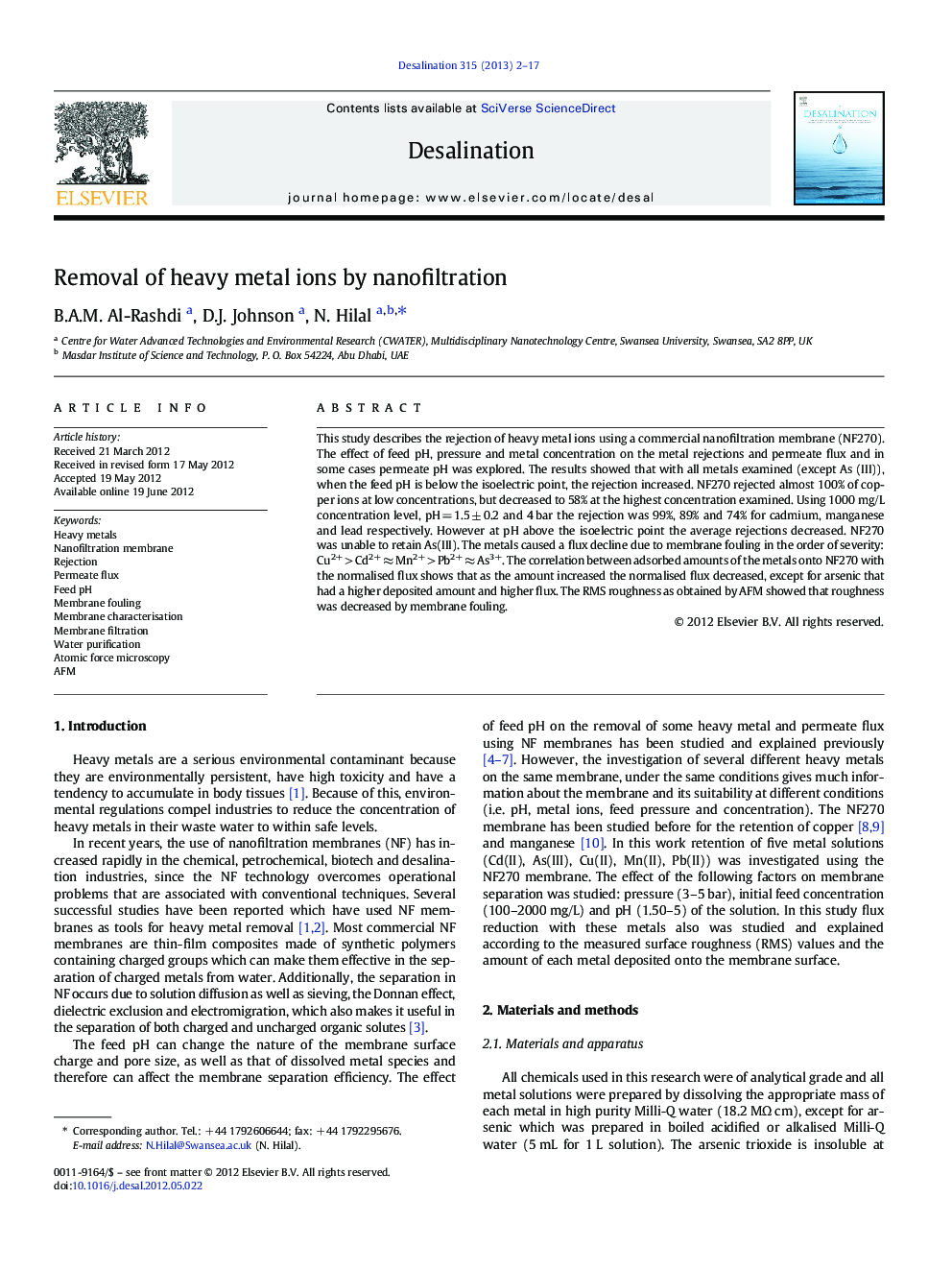| Article ID | Journal | Published Year | Pages | File Type |
|---|---|---|---|---|
| 623826 | Desalination | 2013 | 16 Pages |
This study describes the rejection of heavy metal ions using a commercial nanofiltration membrane (NF270). The effect of feed pH, pressure and metal concentration on the metal rejections and permeate flux and in some cases permeate pH was explored. The results showed that with all metals examined (except As (III)), when the feed pH is below the isoelectric point, the rejection increased. NF270 rejected almost 100% of copper ions at low concentrations, but decreased to 58% at the highest concentration examined. Using 1000 mg/L concentration level, pH = 1.5 ± 0.2 and 4 bar the rejection was 99%, 89% and 74% for cadmium, manganese and lead respectively. However at pH above the isoelectric point the average rejections decreased. NF270 was unable to retain As(III). The metals caused a flux decline due to membrane fouling in the order of severity: Cu2+ > Cd2+ ≈ Mn2+ > Pb2+ ≈ As3+. The correlation between adsorbed amounts of the metals onto NF270 with the normalised flux shows that as the amount increased the normalised flux decreased, except for arsenic that had a higher deposited amount and higher flux. The RMS roughness as obtained by AFM showed that roughness was decreased by membrane fouling.
► Rejection of heavy metal ions using NF membrane has been examined. ► The effect of pH, pressure and concentration on rejection and permeate flux was explored. ► Flux decline was observed due to membrane fouling in the order: Cu2+ > Cd2+ ≈ Mn2+ > Pb2+ ≈ As3+. ► AFM was used to quantify roughness for both clean and fouled membrane.
